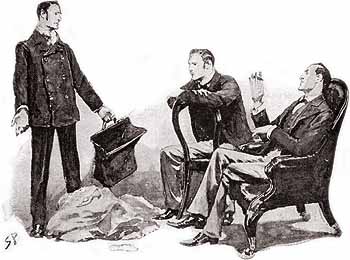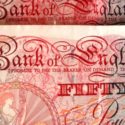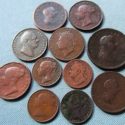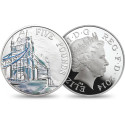A Scion Society of The Baker Street Irregulars

The 17 Steps: The Noble Bachelor
Seventeen thoughts for further ponderance of the case at hand – The Noble Bachelor (NOBL)

WATSON’S MOVING DAY
“It was a few weeks before my own marriage, during the days when I was still sharing rooms with Holmes in Baker Street,” Watson writes.
Three weeks before his wedding day, and Watson is still at Baker Street. How soon before his wedding would he and Mary have started setting up their new home? Would the arrangements been totally in Watson’s hands, or would the doctor have taken his wife-to-be along to check out the real estate in those days? Is it more likely that John and Mary rented or bought their first home?
THE CASE OF THE CASE OR CASES UNKNOWN
“Your morning letters, if I remember right, were from a fish-monger and a tide-waiter,” Watson says to Holmes.
Were these clients or information sources? Does the fact that a fish-monger and tide-waiter are both connected to the sea have any significance? If they were both information sources on a case Holmes was investigating, what sort of situation could require data from such varied consultants?
THE FINE ART OF PENMANSHIP
“It is dated from Grosvenor Mansions, written with a quill pen …”
Holmes doesn’t tell us how he knows St. Simon used a quill pen, but no one seems to question that St. Simon used a quill. Was it still a common sort of ink pen in the late 1880s? Or did it say something about Lord Robert that he stayed with the old fashioned feather instead of using the latest in pens?
ST. SIMON’S JUNKET TO NORTHERN CALIFORNIA
Lord St. Simon “was Under-Secretary for the colonies in a late administration.” Was this his position during his trip to San Francisco? And if it was, what would the Under-Secretary to the colonies have been doing in California? A good will tour? Or was there some government business that needed doing there at the time?
WHEN ALL THE FASHIONABLE PROSPECTORS COME TO TOWN
We are told that Aloysius Doran brought his daughter to England “for this last London season.” Even if he was a very rich man, why would an American gold miner decide to mix with London society for the “season”? As Doran was poor enough to have to raise his daughter in a mining camp before the gold strike, doesn’t it seem a bit like Doran’s entry into London society might have been a bit like an episode of “The Beverly Hillbillies”?
THOSE DANCERS CAN BE DANGEROUS
Lord St. Simon seems to admit that he used police officials in a private capacity: “I had foreseen the possibility of something of the sort, and I had two police fellows there in private clothes, who soon pushed her out again.”
They didn’t arrest her. They just shoved her out the door. Were policemen really necessary to act as bouncers for one aggrieved little dancer? Didn’t the well-to-do in Victorian London have people they used for this sort of thing? Or was the noble bachelor expecting more serious threats than Flora? (Especially as he says, “I do not think Flora would hurt a fly.”)
“HELLO, HERE IS LESTRADE!”
Sherlock Holmes’s visit from the noble bachelor tends to distract us from a more interesting moment, from a continuity viewpoint. As the client leaves, in comes Lestrade, plopping himself down, lighting a cigar, and griping about his day at work. There’s a nice atmosphere of friendship in the way Lestrade arrives and casually accepts Holmes’s cigar. We know Lestrade was in the habit of dropping by 221B Baker Street when things got a bit tricky, and had Lord St. Simon not come to Holmes for help, the consulting detective might have referred Lestrade to the parallel cases, explained the hotel bill clue, and set him on the path toward finding the Moultons himself. But with a noble client to entertain himself with, Holmes holds the solution back.
But as friendly as things are, Lestrade seems to pass on the whiskey and soda. Was he being seriously professional in not drinking on the job?
In the end, however, “Lestrade looked sadly at my companion. Then he turned to me, tapped his forehead three times, shook his head solemnly, and hurried away.” What was Lestrade telling Watson with this gesture? Did the inspector know that Holmes was holding back?
A SIX-PACK FROM THE MIDDLE AGES?
The confectioner’s man and his boy unpack “a couple of brace of cold woodcock, a pheasant, a pate de foie gras pie with a group of ancient and cobwebby bottles.” While the Hounds are ever turning their gaze upon this fascinating culinary collection, I’ve still got a few questions about those bottles. How many bottles of wine does dinner for five require? A “group” of bottles seems like quite a few, doesn’t it? And whatever their age, shouldn’t a good confectioner dust them off before putting them in the box with the food? Come now, cobwebs?
LIVING IN DADDY’S SHADOW
“What will the Duke say,” St. Simon murmurs, “when he hears that one of the family has been subjected to such humiliation?”
What would the Duke say? Would his forty-one-year-old son be subjected to a parental lecture on choosing a proper spouse? Why does St. Simon call himself merely “one of the family” when being the son is a bit more than being just any old relative?
BREAKFAST, LUNCH, IT’S ALL THE SAME TO ME
Francis Hay Moulton’s bill for one of London’s more expensive hotels reads: “Oct. 4th, rooms 8s., breakfast 2s. 6d., cocktail 1s., lunch 2s. 6d., glass sherry, 8d.” One would think an expensive hotel would charge by the entree for meals, yet Moulton’s breakfast and lunch cost him exactly the same amount, and a rather odd little amount at that. Was this to be expected? Is there some other reason these two figures might be identical? Did F.H.M. eat the same thing at every meal? And what would one get for 2s. 6d. at a nice hotel?
AN AMERICAN WERE-MINER IN LONDON
“His letters were to be forwarded to 226 Gordon Square; so thither I travelled, and being fortunate enough to find the loving couple at home,” Holmes says of the Moulton’s. Does this mean that the couple was going to take up residence in London? Why wouldn’t Francis and Hattie return to America after reuniting, putting all memories of Hattie’s English romance behind them? Certainly it had to bother Moulton that his wife had been dating while he was “dead,” didn’t it?
CONCERT TIME AT THE 221B MUSICAL THEATER
“Draw your chair up and hand me my violin,” Holmes tells Watson, “for the only problem we have still to solve is how to while away these bleak autumnal evenings.”
What manner of music might Holmes be playing Watson after bringing a case to a successful conclusion and dining on a fine meal? And why should Watson draw up his chair, and nearer to what? The fireplace? Holmes? How close does one want to sit to a violinist?
THE PRISONER OF THE APACHES
“Frank had been a prisoner among the Apaches …”
Were the Apaches in a position to be taking long term prisoners in 1880s America? What would they have done with Moulton during that time? Simply keeping him prisoner would have served no purpose, surely they put him to work if they didn’t kill him. What sort of work would it have been?
THE BUDGET HONEYMOON PLAN
For a man who waited until his forties to marry, Lord Robert doesn’t seem to have saved up much cash to treat his bride right. We read that “the honeymoon would be passed at Lord Backwater’s place, near Petersfield.” Now, Lord Backwater seems to be a particular friend and adviser of St. Simon … did honeymooning couples of that era often spend their first post-nuptial nights at a friend’s home? Or was St. Simon just that cheap?
FLORA’S DEPARTURE FROM THE ALLEGRO
“She used to be at the Allegro. I have not treated her ungenerously, and she had no just cause of complaint against me, but you know what women are, Mr. Holmes.” So St. Simon speaks of Flora Millar, whose relationship with him is never spelled out in the sort of explicit detail Oprah Winfrey or Barbara Walters might coax out of him. Why was Flora no longer at the Allegro? Did St. Simon have anything to do with her leaving her former employ? He was, after all, “not ungenerous” to her, was he? Was she his kept woman? Was Flora the reason El Roberto maintained his “bachelorhood” so long?
THE COSMIC COINCIDENCE OF COUPLES COLLIDING
One of the key wrong turns poor Lestrade takes in this tale is based upon the unlikely coincidence of both groom and bride having former lovers with the same initials. But was this mere coincidence, or something much more metaphysical? Were Hattie and Robert drawn together by some remarkably parallel personal energy? Both had lovers with the initials “ F.M.” Both had successful fathers who got them to where they were. Can you spot any other parallels?
THE CANONICAL CHARACTER CLUB
We’ve already looked at how St. Simon was planning to honeymoon at the home of Lord Backwater, who is also mentioned in “Silver Blaze.” St. Simon’s fiancee, Hatty Doran, was quite the hit at the Westbury House festivities. Might Westbury House have been connected with Miss Violet Westbury of “Bruce-Partington Plans”? While I’m not going to claim that the Apaches who got Frances were the same who crippled Le Brun in “Illustrious Client,” but is a Westbury connection possible?
The Seventeen Steps originally appeared on the Hounds of the Internet e-list from September 2000 to October 2001 and later on the Sherlock Peoria blog.
 Brad Keefauver, the 41st Garrideb, is the author of The Elementary Methods of Sherlock Holmes, Sherlock and the Ladies, and The Armchair Baskerville Tour. Former publisher of The Holmes & Watson Report, The Dangling Prussian, and a whole lot of obscure, collectable little things on our boy Sherlock. Keefauver is a member of the Baker Street Irregulars and the Adventuresses of Sherlock Holmes.
Brad Keefauver, the 41st Garrideb, is the author of The Elementary Methods of Sherlock Holmes, Sherlock and the Ladies, and The Armchair Baskerville Tour. Former publisher of The Holmes & Watson Report, The Dangling Prussian, and a whole lot of obscure, collectable little things on our boy Sherlock. Keefauver is a member of the Baker Street Irregulars and the Adventuresses of Sherlock Holmes.



